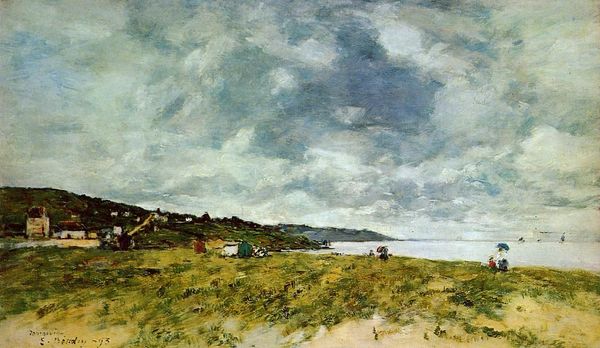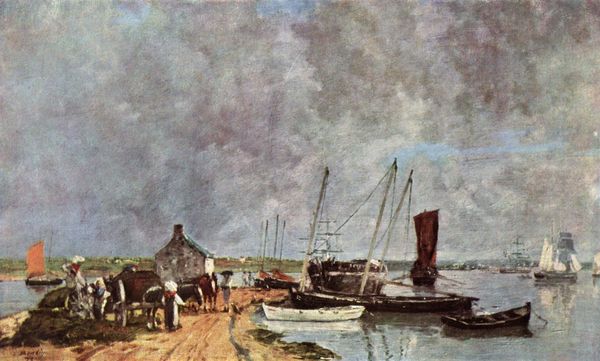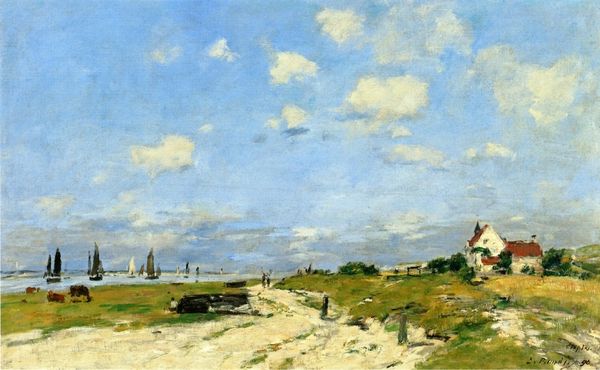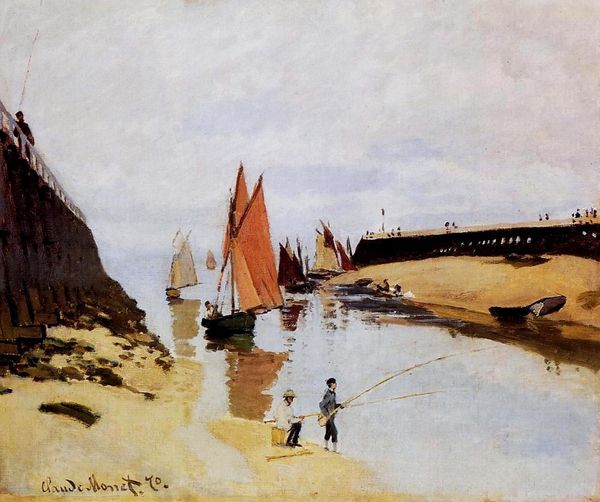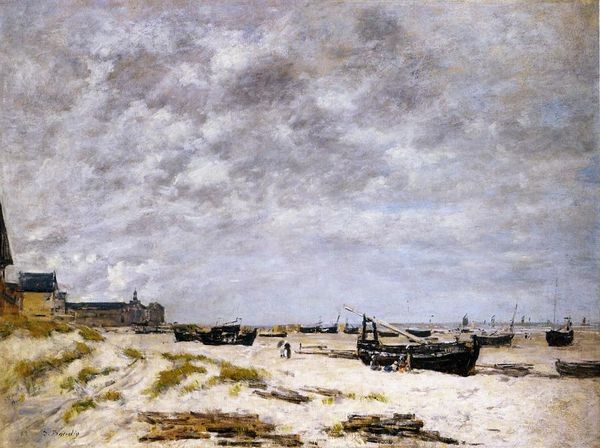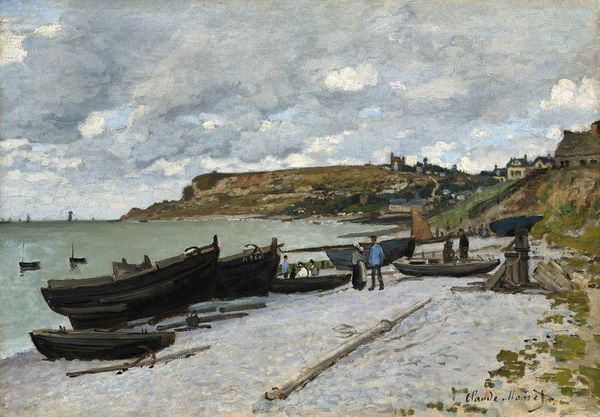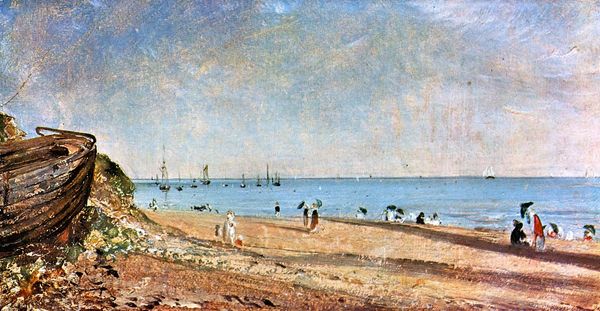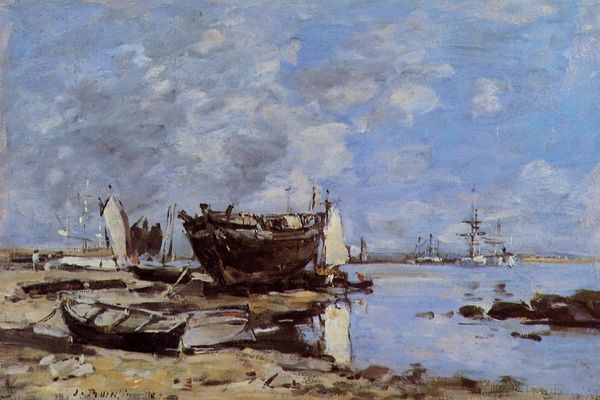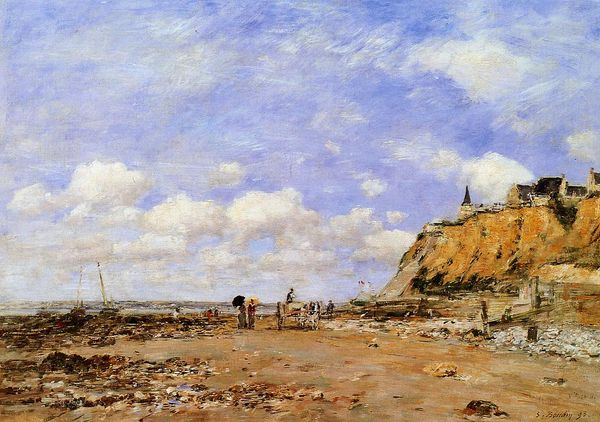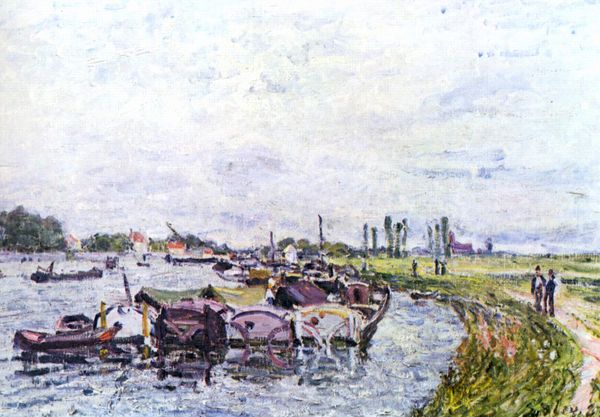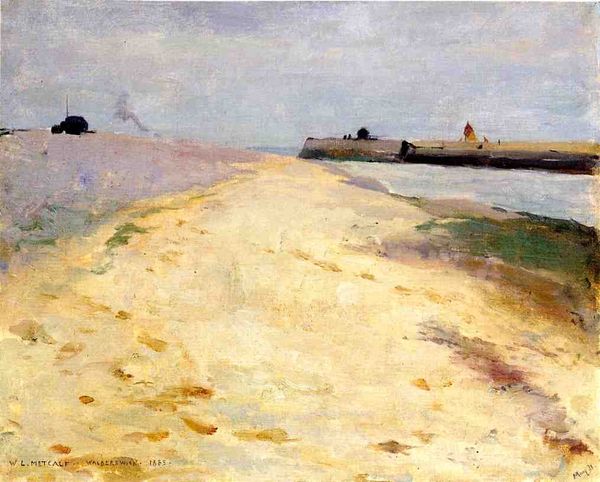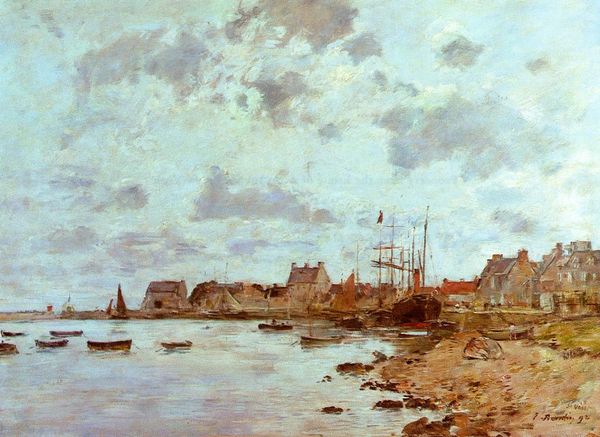
painting, oil-paint
#
boat
#
ship
#
painting
#
impressionism
#
impressionist painting style
#
oil-paint
#
landscape
#
impressionist landscape
#
oil painting
#
cityscape
#
sea
Copyright: Public domain
Editor: "Boatyard near Honfleur" painted in 1864, invites us into Monet’s early engagement with landscape. What’s your initial reaction? Curator: A sort of quiet melancholy permeates the scene. The low horizon line and muted color palette—mostly greys and browns—create a somber mood. There's a definite compositional tension between the roughly textured foreground and the soft, atmospheric distance. Editor: Indeed. Notice the almost mournful quality in the rendering of the boats out at sea? Ships traditionally symbolize journeys, transitions, perhaps even escapes. Curator: Absolutely, though consider also how Monet uses short, broken brushstrokes. Look at how they construct the forms of the boats and the buildings. The syntax of painting itself is emphasized, it anticipates the full flowering of Impressionism and his focus on pure optical sensation. Editor: The structures themselves suggest a working port, maybe even impermanence. Do you read anything symbolic in the choice of depicting labor? It resonates deeply in art. Curator: Perhaps it references the burgeoning industrial revolution, and also speaks to his social awareness through representational landscape painting. But in relation to artistic strategies, notice the flattened perspective? The picture plane is decidedly self-aware. Editor: I can’t help thinking about this painting within the broader narrative of 19th-century harbor scenes; its depiction can be seen in that light, not just aesthetically but culturally. Curator: Granted. But as a study of forms and tones, it presages so much to come. Seeing this canvas afresh has highlighted to me, what is truly ground-breaking is his commitment to perceptual truth—a world rendered via its own syntax and not according to conventions. Editor: Yes. For me, engaging with a canvas like this renews my curiosity about what an image holds in social and cultural meanings across different historical eras. Curator: Precisely. It’s an engaging example to appreciate the synthesis of aesthetic and contextual depth.
Comments
No comments
Be the first to comment and join the conversation on the ultimate creative platform.
